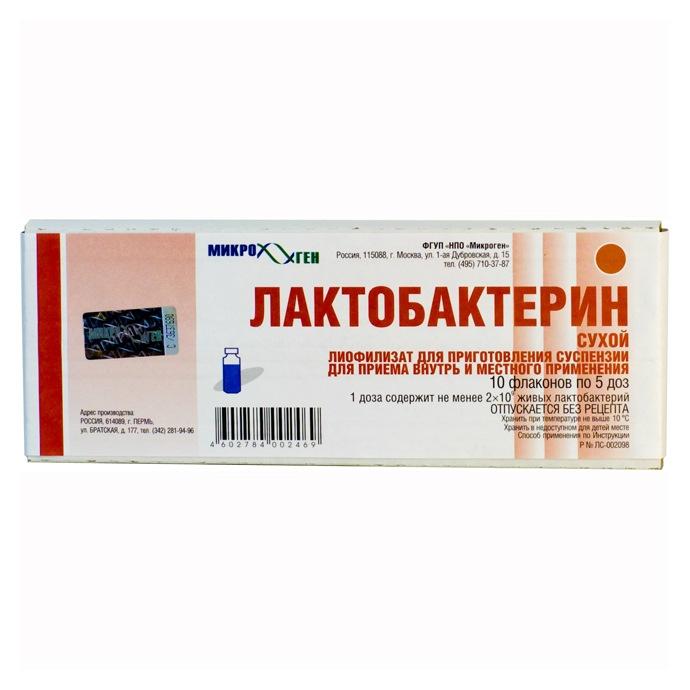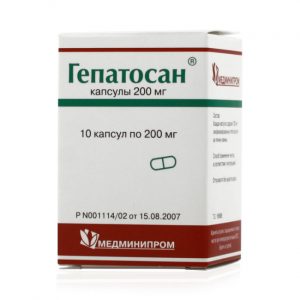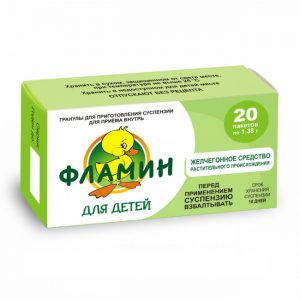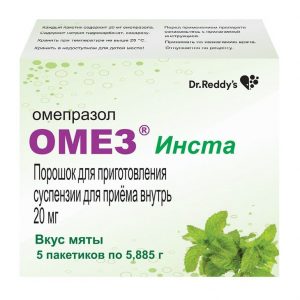Description
Latin name
Lactobacterin
Release form
Powder for oral solution and topical application
Packaging
in vials of 5 doses per package of 10 vials.
Pharmacological action
Lactobacterin has a broad spectrum antibacterial effect.
Pharmacodynamics
Live lactobacillus included in the drug, possess antagonistic activity against a wide range of pathogenic and conditionally pathogenic bacteria (including staphylococci, protea, enteropathogenic Escherichia coli), normalize the digestive activity of the gastrointestinal tract, improve metabolic processes, and contribute to the restoration of natural immunity.
Metabolize the glycogen of the vaginal epithelium to lactic acid, which maintains the pH of the vagina at 3.8 4.2.
Lactic acid in high concentration creates unfavorable conditions for the life of acid-sensitive pathogenic and opportunistic bacteria.
Indications
For diseases of the gastrointestinal tract:
Reconvalescents after acute intestinal infections,pathogenic bacteria.
Somatic diseases complicated by dysbiosis resulting from the use of antibiotics, chemotherapy and other causes.
Comprehensive treatment of debilitated children with diseases of infectious and non-infectious etiology, accompanied by dysbiosis and atopic dermatitis.
Chronic colitis of various etiologies, including non-specific ulcerative colitis
For diseases of the female genital area:
For sanitation of the genital tract for non-specific inflammatory diseases of the genitals and prenatal preparation of pregnant women at risk with impaired purity of the vaginal secretion to grade III-IV.
Contraindications
Vulvovaginal candidiasis
Pregnancy and lactation
Allowed.
Composition
Active ingredient: acidophilic lactobacilli at least 4 billion CFU
Excipients: components of a protective environment for drying Ania (gelatin, sucrose (sugar), milk).
Dosage and administration of
Lactobacterin is used internally for intestinal diseases, and intravaginally in obstetric and gynecological practice.
Dissolve the drug with boiled water at room temperature at the rate of 5 ml (teaspoon) of water per 1 dose of the drug.
For intestinal diseases, the drug should be taken 40-60 minutes before meals and it is advisable to drink milk. Treatment is recommended to accompany the use of vitamins.
For intestinal diseases, lactobacterin is used in the following daily doses:
Age Dose
Up to 6 months 3 doses 2 times a day
6 months to 1 year 3 doses 3 times a day
1 to 3 years 5 doses 2 times a day
Older than 3 years and adults 5 doses 2-3 times a day
The course of treatment with lactobacterin for various diseases is: with a protracted and chronic course of dysentery, postdysenteric colitis, aftercare after convalescents, and also with prolonged intestinal dysfunction of unknown etiology, treatment – at least 4-6 weeks
with ulcerative colitis, as well as chronic colitis and enterocolitis – up to 2 months
with dysbiosis of various etiologies – 3-4 weeks.
In the absence of the effect of using the drug for 2 weeks, it is necessary to re-examine the microflora of the gastrointestinal tract and correct it with other drugs, depending on the result.
To consolidate the clinical effect obtained or in the absence of complete normalization of microflora after the end of the course of treatment, in case of diseases that occur with relapses, repeated courses of treatment are advisable. In these cases, a re-examination of the microflora is necessary before prescribing the drug. Maintenance doses of the drug (half the daily dose) are prescribed after 2-3 weeks for 1-1.5 months.
In inflammatory diseases of the genitals, lactobacterin is prescribed 5 doses 2 times a day intravaginally for 10-12 days, starting from 10-12 days of the menstrual cycle. For prenatal preparation of pregnant women at risk, lactobacterin is prescribed 5 doses 1 time per day for 5-8 days.
With intravaginal administration, dissolve the contents of the vial in 5-10 ml of boiled water at room temperature, soak a sterile swab with the dissolved preparation, insert the swab into the vagina and leave it for 2-3 hours.
Treatment is carried out under the control of restoring the purity of vaginal secretion to I-II degree, the appearance of lactoflora and the disappearance of the clinical symptoms of the disease.
Side effects
Allergic reactions.
Drug Interaction
Due to the high antibiotic resistance of lactobacilli, the use of dry lactobacterin in antibiotic therapy is allowed.
Overdose
Not registered.
Storage conditions
At a temperature not exceeding 10 ° C. Keep out of the reach of children.
Expiration
1 year
Dispensing conditions from
pharmacies No prescription
Microgen NGOs, Russia




